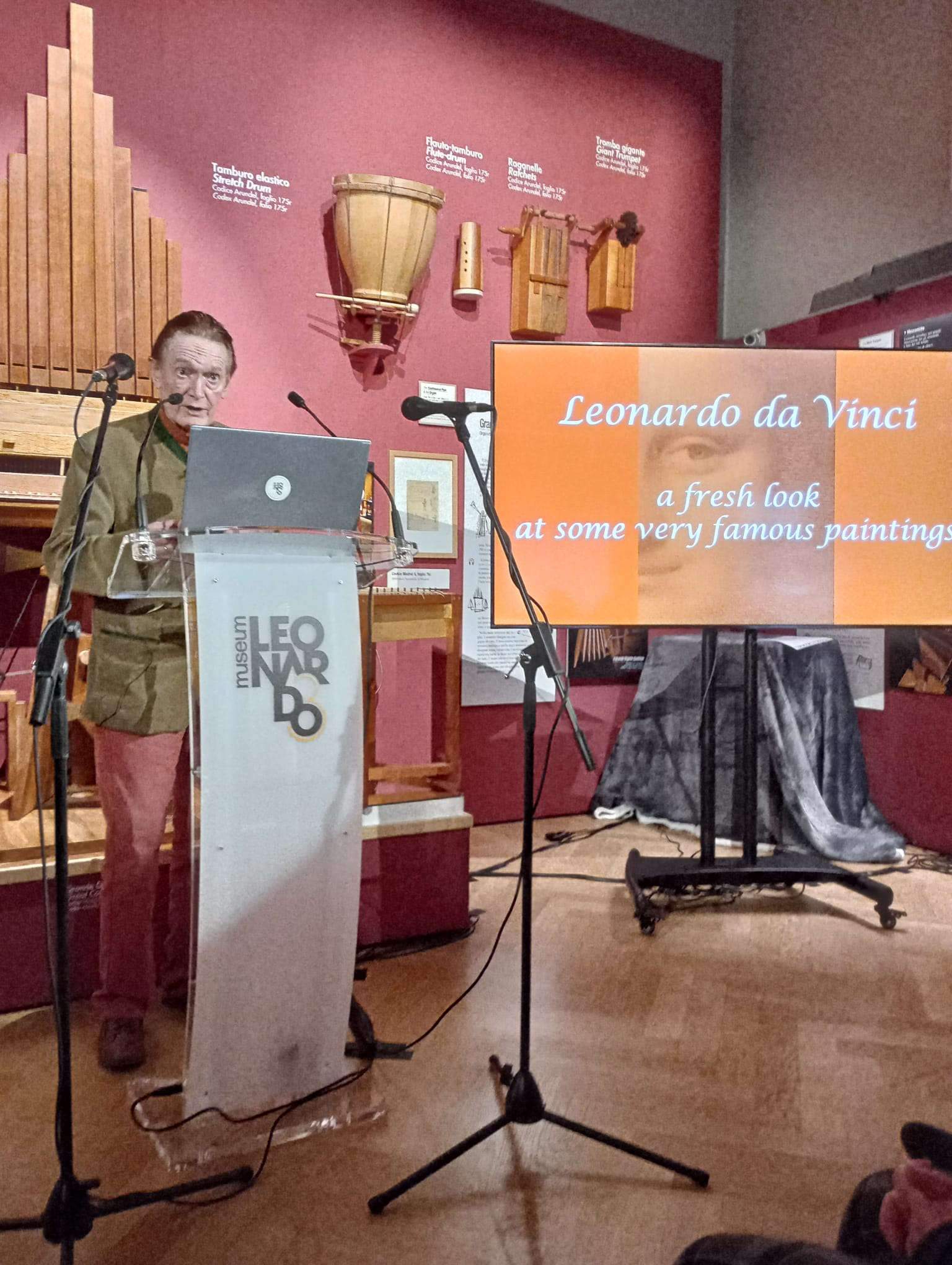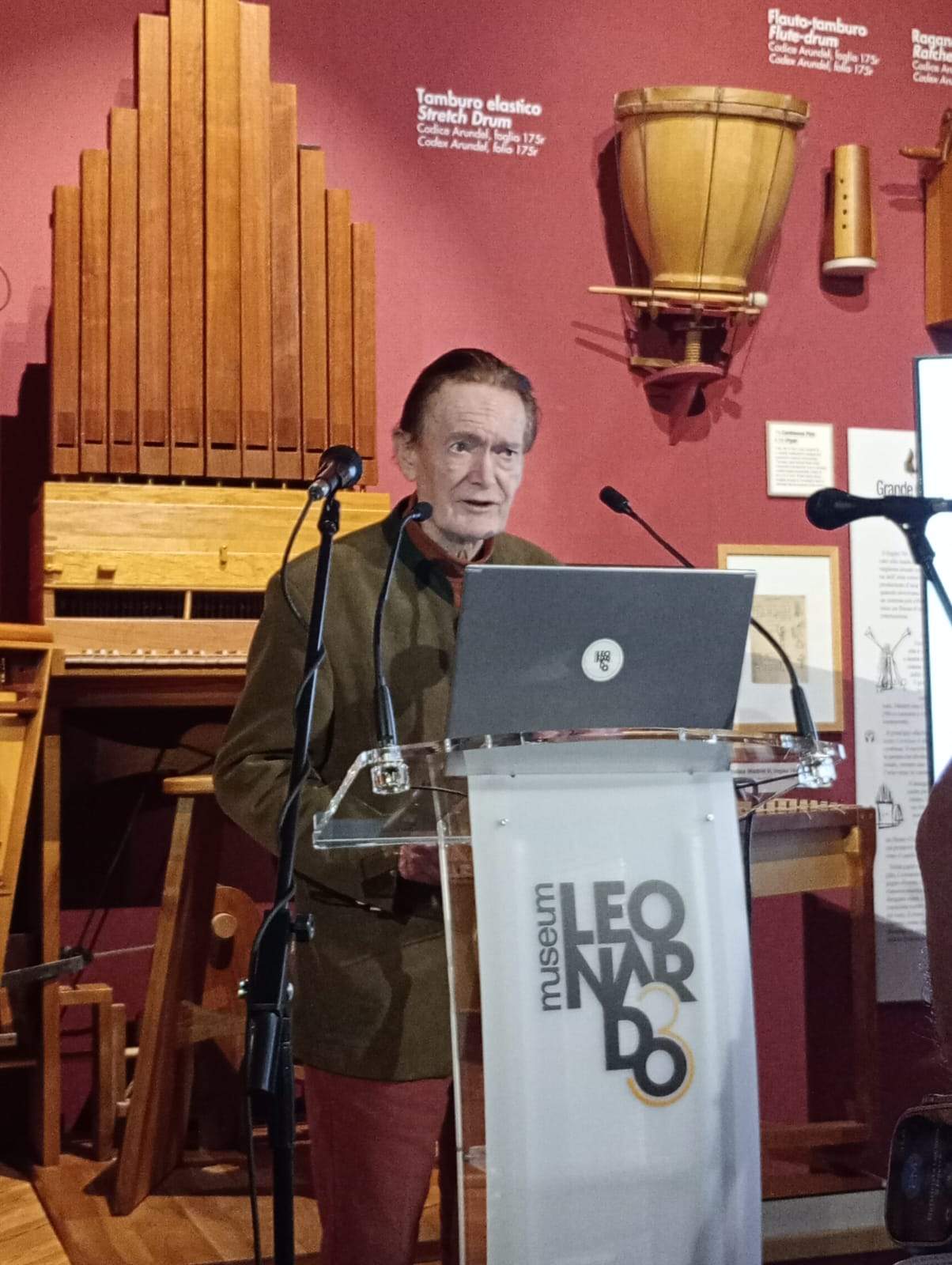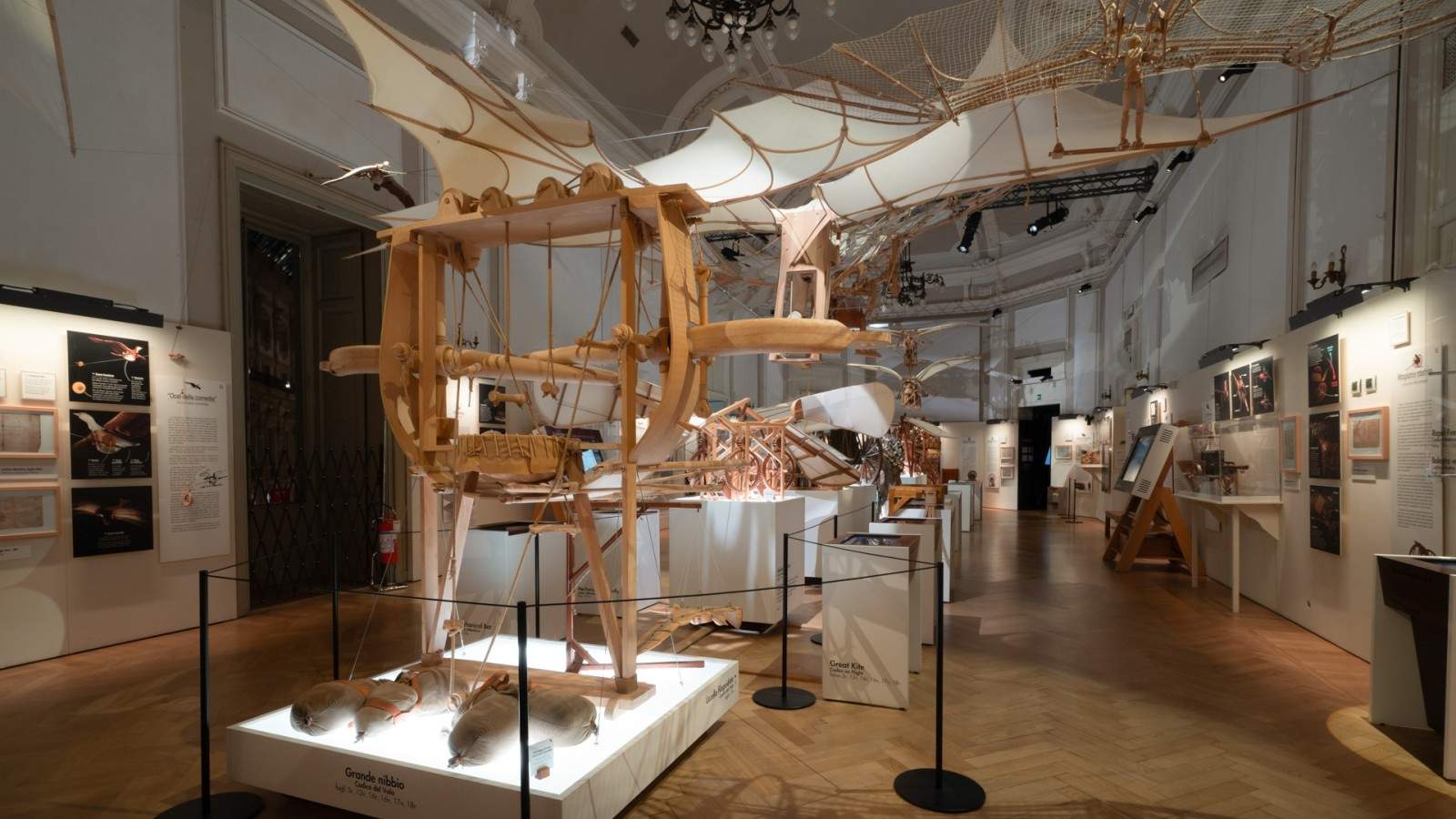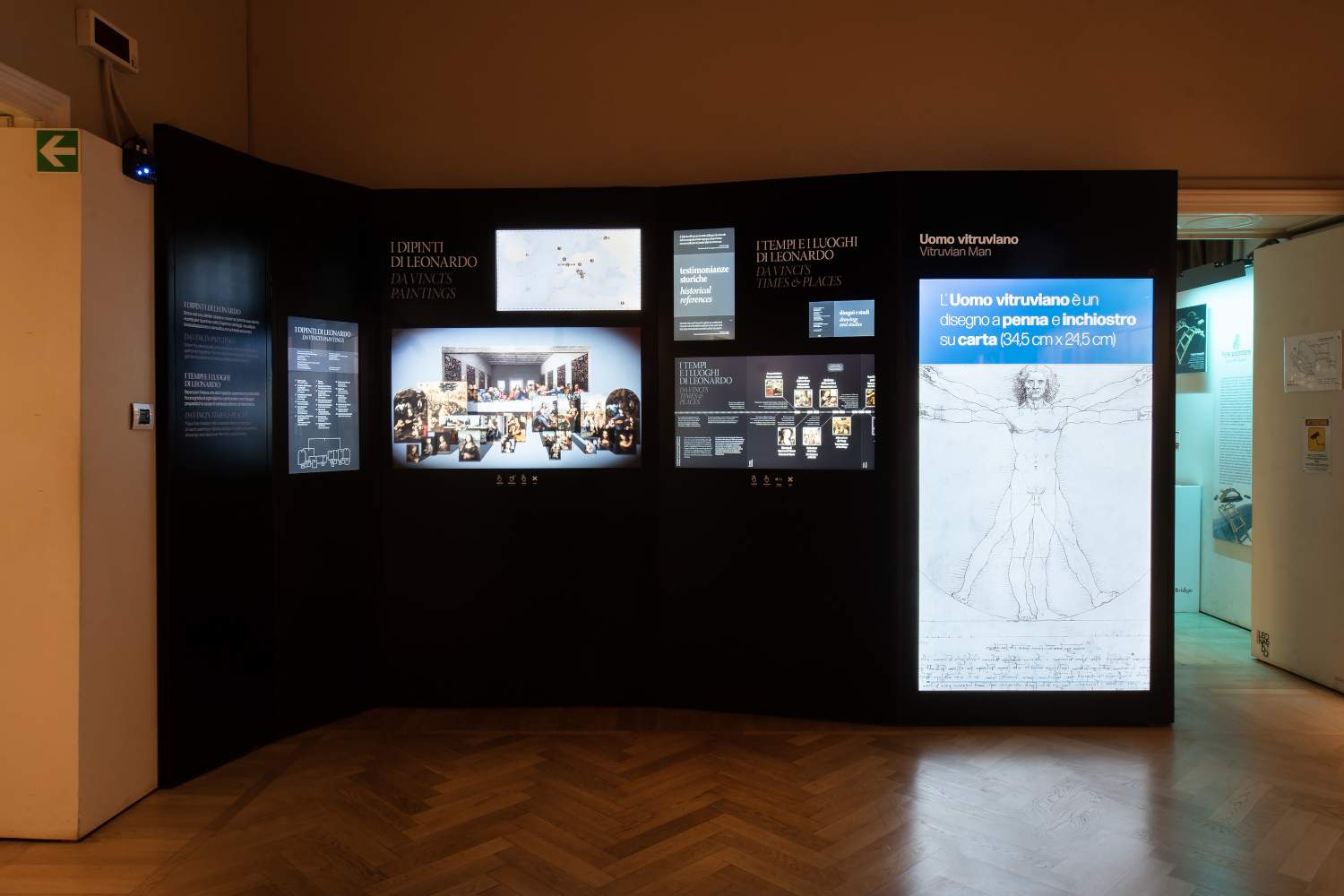Martin Kemp: Leonardo da Vinci fascinates us because he went beyond convention
Last Feb. 15, the Leonardo3 Museum in Milan opened a new interactive wall that brings together, on a large screen, all of Leonardo da Vinci’s paintings, which can be viewed and explored in depth. For theoccasion, Professor Martin Kemp, a British art historian and one of the leading experts on Leonardo da Vinci, gave a lecture entitled Leonardo da Vinci. A fresh look at some very famous paintings and dedicated precisely to the great Renaissance genius (which we will report on soon in these pages). The occasion was useful to exchange a brief interview with Professor Kemp about Leonardo. The interview is by Federico Giannini.

FG. Professor Kemp, today’s meeting is hosted by the Leonardo 3 Museum, a museum that recreates the machines designed by Leonardo da Vinci and offers several interactive experiences. I would start right here: how important can interactivity be in promoting knowledge about Leonardo da Vinci, and how can it do that?
MK. Interactivity, for Leonardo da Vinci’s machines, is absolutely vital to make people understand, in the face of his drawings, which are static, how his machines should work. And this aspect cannot be understood unless you see the machines at work, or unless you watch a video demonstrating how the machine was supposed to work. It is a different level of relationship, and then it is also a way to test them: without reconstructing and testing them, it is not possible to know whether these machines worked or not. In other words, it is experimental art history, experimental science history.
In your opinion, what is the contribution that a museum like L3 Museum can make in the knowledge of Leonardo? And how can it help the public in approaching Leonardo’s work?
This museum does very serious and thorough research work, also thanks to good engineering support: this work has been very useful for me as well, for example I didn’t understand how some machines worked and, thanks to the work of this museum, now I understand it, so this is a fundamental aspect of research. And then there is communication with the public: of course, you can do it, as in my case, by writing books, participating in television programs, and so on, but having a museum dedicated to Leonardo’s scientific research is also incredibly important in terms of communication and education, because it involves the public in a very cross-cutting way, even in terms of the age of the visitors: it ranges from older audiences to children, and it is precisely children who love to see Leonardo da Vinci’s machines reconstructed.
So this could be a good introduction to Leonardo’s art as well?
Yes but not only that, it is something more than an introduction. It is really a research.
You have devoted a lifetime to the study of Leonardo da Vinci’s work. How did the passion for this great artist come about?
First of all, it is worth saying that I have written a lot about the relationship between art and science: on this topic for example, I have also kept a column in the journal Nature for more than twelve years, so I am very interested in the way figurative language and art, particularly that of the Renaissance, interfaces with science, so the one on Leonardo is but one part of a much larger topic, but it is also the portion on which most of the public’s attention is directed, and I too therefore could not help but get to Leonardo. The first encounter with Leonardo, however, was fortuitous. I graduated from Cambridge with a degree in Natural Sciences, after which I got a major in Art History, but I did not expect to find connections between these fields. At that time I was mainly studying French art: it happened, however, that I met a young television producer who was doing a program on Leonardo’s drawings devoted to water, and Gombrich, the great scholar and art historian, gave us a copy of one of his studies, not yet published at the time, devoted to the movement of air and water in Leonardo’s drawings. My relationship with Leonardo began like this: it simply happened, it was a fortuitous event, like so many things that happen in our lives. We always try to find a logical explanation for what happens, but in reality it is often pure coincidence.
What are the main innovations that Leonardo studies have produced in recent years?
I would say a broader understanding about the relationship between different aspects of his work. It is this area of research that I have also focused on, and so have other scholars, such as Marco Versiero. On this subject there has been an increase in awareness, in the sense that we are now much more aware that Leonardo’s work was not heterogeneous, but all aspects of his work were animated by a common core: all the forces of nature operate in a certain way, so it is not a matter of saying that there is one explanation for this phenomenon and another explanation for that other phenomenon, but it is all part of a continuous knowledge.


In the introduction to today’s meeting, it is said that no painter has embarked on a journey as significant as Leonardo da Vinci’s: why do you think?
Because he refused to accept conventional boundaries of knowledge, for example those between art, science, engineering, geology and so on. In the Middle Ages and the Renaissance the divisions of knowledge were not the same, nevertheless there were sets of knowledge separate from each other. What Leonardo was saying at that time, and it is a message that is still valid today, is that we should try to understand everything together: of course, it is also possible to understand only one thing, but then you cannot appreciate the workings of the world to the fullest.
But so, in your opinion, this way in which Leonardo in fact broke down the barriers between different fields of knowledge is also the reason why the public today is so fascinated by Leonardo?
Yes, absolutely. Take all the great artists of the time: for example, Michelangelo, who was also a great opponent of Leonardo. He was an exceptional artist, but there is no trace of this universal knowledge in his art. It’s different for Leonardo: someone who has an interest in medicine can look at Leonardo’s drawings and say “they are extraordinary.” Someone who has an interest in engineering can look at Leonardo’s drawings and say “they are fantastic.” And so on. Leonardo had this ability to communicate beyond the rigid classifications of knowledge of his time.
Another personal question: is there a work by Leonardo to which you feel particularly attached, either because of personal passion or because of professional reasons?
I can give two answers to this question. Basically, the picture par excellence is the Mona Lisa, but if I have to say which one I would keep in my house, I would say the Lady with an Ermine, Cecilia Gallerani, because it is a rather complicated painting although it retains a certain freshness and directness. The Mona Lisa, on the other hand, is a bit awe-inspiring. So if I had to choose to steal something... I would opt for Cecilia Gallerani!
Instead, what do you think is the most surprising aspect of Leonardo da Vinci’s work?
For me, the most surprising aspect lies in the fact that although I have known Leonardo for a long time now and although I think I have a good knowledge of his work, I am always discovering new things. Leonardo is constantly asking us questions that we have not yet answered.
There are so many scholars today who deal with Leonardo: You have been studying the artist for decades, how has the approach to this artist changed over time? And how much is still to be studied about his work?
The changes are related to what I was saying earlier, which is that there is now a widespread awareness about the links between different fields of knowledge in Leonardo’s work, and I think in that sense there is still a lot of room for studies on the experimental part of Leonardo’s work, so research on his machines and how they work. And I think experiments on Leonardo’s machines will continue to make use of physical models but also virtual reality.
So there is still a lot to study about Leonardo da Vinci....
I have to say that one of the encouraging aspects is the fact that, in the middle of my career, there were not many scholars working on Leonardo da Vinci. Now, on the other hand, there are many scholars, many young scholars, who are doing research on Leonardo da Vinci, and who are not intimidated by the presence of big names, such as Carlo Pedretti, hovering over the artist. These new scholars are opening up new areas of research and revealing very surprising, incredible elements, so I am very optimistic about the future of Leonardo studies.
Warning: the translation into English of the original Italian article was created using automatic tools. We undertake to review all articles, but we do not guarantee the total absence of inaccuracies in the translation due to the program. You can find the original by clicking on the ITA button. If you find any mistake,please contact us.





























